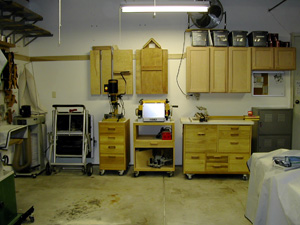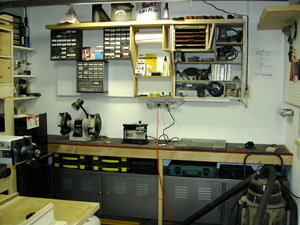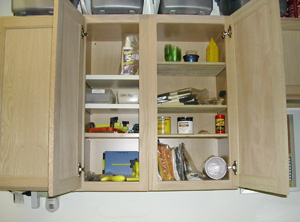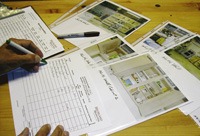 Ever since I overheard my Dad say he was going to cut down the old Magnolia tree by our house, I was excited as only a small boy can be. The thought of my father swinging his giant double blade axe, chips flying, and that giant tree crashing to the ground while I yelled “timber” at the top of my lungs, filled my daydreams.
Ever since I overheard my Dad say he was going to cut down the old Magnolia tree by our house, I was excited as only a small boy can be. The thought of my father swinging his giant double blade axe, chips flying, and that giant tree crashing to the ground while I yelled “timber” at the top of my lungs, filled my daydreams.
Saturday finally came, and my Dad led me to the tool shed where he put a new sharp edge on both sides of the axe. Then we walked out to the tree, but rather than starting to chop, he sat with his back to the trunk in the long morning shade and patted the ground next to him and said “Sit.”
“When are you going to cut it down, Dad?”
“Oh, maybe in a little bit. You know, I’ve seen you climbing this old tree before. Aren’t you going to miss it?”
“There’s lots of other trees I can climb.”
“Yeah… but none just like this one. You know, son, I’ll bet this old tree is close to a hundred years old.”
“You think so, Dad?”
“I suspect so. You know, if it’s a hundred years old, it was here during the Civil War. It was here at the turn of the century. It would have been here before your Granddaddy was born.” He paused to let that information sink in then continued, “You know, if we left it alone it might live another hundred years.”
Even at six years old, I was starting to have second thoughts. “You think we should leave it?”
“Well, son, you know its roots have been growing into our sewer line. I’ve been paying a plumber to come out here every six months or so to clean out the pipe. I can’t afford it anymore. It’s kind of come down to me or the tree.”
“Yeah, I guess so.”
“But, I’ve been giving this a lot of thought. Much as I hate to cut it down, we won’t let any of it go to waste. We’ll cut some nice lumber out of it, maybe make something pretty for your Mom. We’ll use some of it for firewood, too. But I’m not sure that’s enough.”
“What do you mean, Dad?”
“It just seems to me that if we cut this tree down, we ought to plant another tree someplace to replace it.”
“Hey, that seems like a great idea!”
“You think so? Then that’s what we will do. This old tree will be sacrificed, but we’ll put it to good use, and we’ll plant another tree to make up for it.”
It was quiet for a few minutes. I guess we were both lost in thought, but I remember asking, “So how old do you really think it is?”
For two hours, we talked. He explained how we would soon know exactly how old the tree was, by counting the growth rings. We talked about the Civil War, the invention of the cotton gin, penicillin, the Great Depression, and more. My Dad spun stories about cowboys tying their horses to the tree and young boys carving their initials in its bark. He wondered whether or not he might cut into an old fence wire that was nailed to the tree in some distant farm past, and whether or not the wood would smell as sweet as the Magnolia blossoms.
Finally, my Dad said, “Son, I think it’s time. You still think we should cut it down?”
Hesitantly I said, “Daddy, we can’t afford the plumber, remember?”
True to his word, a couple of weeks later my father came home from work with not just one, but a dozen, sapling trees in the back of his truck. We dug holes, planted, and watered the trees. I climbed other trees, had other exciting adventures, and forgot all about the big Magnolia. But a few years ago, I had a chance to go back to my childhood house. Those trees we planted are fifty years old now, and probably as big as the big Magnolia was in its day. Those trees are beautiful, the blossoms are sweet, and I’m sure some young boy has climbed them all.
It was, it turns out, my father’s trademark… and his legacy. Not just to leave every place a little better than he found it, but also to leave a young boy with a lasting memory and a lifetime appreciation for history, nature, trees, wood, and the things we make from wood… to sometimes take what we need, but to always give back, with interest… to slow down sometimes… to talk, to listen, and to think. I hope, that among many other things, you were thankful this Thanksgiving for whatever, or whoever, got you started in woodworking. I know I was. Thanks Dad!
This story is excerpted from The Down to Earth Woodworking column, published monthly in Wood News. Click here to read this month’s entire column.
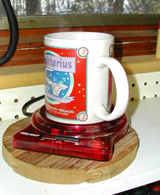 Some of these things are not necessarily the things you might imagine – my band saw and my No. 4 smoothing plane are critical components to the shop, but my electric cup warmer and my old wooden stool are main stays as well, and I use them every day to keep my ever-present coffee hot and my posterior dutifully accommodated.
Some of these things are not necessarily the things you might imagine – my band saw and my No. 4 smoothing plane are critical components to the shop, but my electric cup warmer and my old wooden stool are main stays as well, and I use them every day to keep my ever-present coffee hot and my posterior dutifully accommodated.

